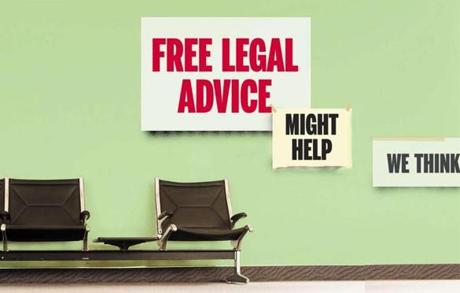INCREASING ACCESS TO LEGAL SERVICES
I recently ran across a post on a fairly well circulated legal blog where the author advocated for allowing Unlicensed Practice of Law commonly known as UPL, to reduce the cost of legal services. In other words, allowing individuals who have not been licensed by any state bar association such as; document preparers, paralegals, and law students to administer legal advice.
Unfortunately, while the author’s heart is in the right place – addressing inadequate access to legal services – the solution he proposes is fatally flawed. To suggest, allowing those without law licenses, such as paralegals, to practice law is unsound and suggests one’s life, liberty and well-being wouldn’t be outcome dependent. Using the authors logic, those who cannot afford health care would be diagnosed and treated to by unlicensed doctors and practitioners. Can’t afford the high cost of surgery? Maybe a surgeon who isn’t licensed by the medical board can help out.
The author, however, makes some legitimate points. For example, requiring a law license for simple matters such as document preparation is indeed overkill, as evidenced by the emergence of self-service legal services. (Think LegalZoom) However, the author also regrettably adds that by allowing non-lawyer investors to purchase and run law firms, it would result in more efficient legal services and lower costs. Unfortunately, the last I checked, deregulation has done little to improve quality and provide long-term sustainable lower costs to consumers in any market.
The author’s overall analysis was incomplete. Although he briefly touched on the pink elephant in the room – acknowledging that “free legal services are limited to certain legal issues,”- he leaves out an entire segment of the U.S. legal system in need of adequate legal services, Criminal Defendants. According to the Administrative office of the U.S. Courts , in Federal courts alone, there has been “a 70% jump in the number of pending federal criminal cases in the past decade.” At the same rate, civil federal litigation has been held up at an alarming rate due to the influx of criminal cases.
But criminals are entitled to an attorney if they cannot afford one, right? Yes, federally through the Sixth Amendment and later applied to the states via the Fourteenth Amendment in Gideon v. Wainwright. However, that does not always amount to adequate representation. Justice Anthony Kennedy recently opined on how 97 percent of all federal cases and 94 percent of all state cases end in plea bargains, leaving serious questions as to the efficiency of criminal legal representation.
WELL WHAT’S YOUR BRIGHT IDEA?
I don’t think allowing UPL by non-lawyers is the key to increasing access to and improving the limited legal representation that exists. In my opinion, lowering the overall cost of a legal education would be a good start to increasing access to affordable legal representation. The ABA Journal reports that the average cost of a legal education with living expenses is around $216,406 for the year 2013! Simply put, on a ten year repayment plan, the monthly cost to repay that amount is over $2500 month, or nearly $16 per hour, per forty-hour work week for the next ten years. On top of that, factor in that attorneys generally earn between $40-65,000 a year before taxes, which amounts to $20-32 per hour in salary. With half, or nearly a third of your salary accounted for in student loan debt, how could anyone afford to provide affordable legal services?
Lowering the cost of legal education
Programs do currently exist that promise to vastly reduce, or even eliminate a young lawyers student loan debt if they work in the public sector for at least ten (10) consecutive years. However, the long term effect of these programs remains to be seen. Mark Kantrowitz, a higher education expert, suggests that law students loan “costs are so out of sync with their employment rates and their incomes that whatever comes later on with other [graduate] programs will probably happen first with law schools.” Simply put, law school tuition is the most grossly over-adjusted post-graduate tuition rates that exist, and if they can fix our problem, they can fix any graduate program with similar issues.
None of this helps us reduce the cost of attending law school; it only reduces the amount students have to pay back. However, schools do exist with reasonable debt to income ratios. Take for instance, Brigham Young University Law School, where the average student debt load was $56,000 and the median starting salary was a healthier $86,000. Usnews.com reported the ten best law schools where debt to income for the cost of education were the most modest in the nation. What possibly could these schools be doing that other schools aren’t? For starters, they aren’t privately ran institutions charging whatever they wish for tuition. Though unranked schools weren’t included, the emergence of private schools has arguably increased the overall cost of attendance for many newly minted JD’s.
Private law school tuition, on average, is $40,585 per year compared to just $23,590 for public law schools. However, all cannot be blamed on greedy private law school investors. A recent U.S. News & World Reports study show that while private law school tuition increased four (4) percent year over year, public law school has increased six (6) percent. Either way, the cost of law school tuition has outpaced the rise of inflation by 3 to 1. Nowhere on earth would this business model make sense and it’s all being financed on the backs of aspiring attorney’s, many of which, myself included, went to law school to help people. With the crushing debt loads students are taking on, it’s increasingly difficult to help anyone who cannot afford to pay the cost of being a lawyer.

